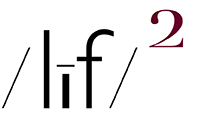FORTUNATELY, RE; MY EYE AND SENSIBILITIES, IT SEEMS that no matter where I go are there is always a kitchen sink and kitchen garbage.
On a different topic, I have been avoiding getting caught up in the monochrome sensor GAS” discussion”. That’s primarily cuz I do not think that my thoughts on the matter would be all that well considered.
First and foremost, I admit to not being much of a BW-oops, sorry, I meant to write monochrome-picture making guy. That’s cuz, for the most part, I believe that BW picture making is a curse on the medium and its apparatus.
Think of it this way…with the exception of cave dwellers, virtually all painting was created using color...ASIDE Sure, sure. With the advent of the printing press, illustrations were presented with the use of just black ink, BUT, even then some illustrators were given to hand coloring the printed illustrations. And, BTW, for the purpose this discussion, etchings and woodcuts are not paintings. END OF ASIDE…So when color dyes / paint became available, painters took to it like ducks to water. Without too much assumption, one could surmise that they adopted color materials cuz they were exceedingly more expressive and representative of the real world. And, fortuitously, they were never burdened by the need to break out of or revert to a BW painting legacy.
The medium of photography and its apparatus were born and wedded to BW-ops, sorry, I meant to write monochrome-pictures and continued to be so bound until the 1936 introduction of Kodachrome film. ASIDE Sure, sure. Prior to 1936, there were a number attempts to create the means for making color photographs but they came and went in fairly short order. END OF ASIDE However, even with the advent of commercially available color film, “serious” photographers remained committed to using BW-ops, sorry, I meant to write monochrome-film and, of course, making BW-ops, sorry, I meant to write monochrome-prints.
Re: the curse - that BW-ops, sorry, I meant to write monochrome-legacy has attached itself to the medium and its apparatus like fleas on a mangy dog. Consequently, those picture makers who cling to it today, in a manner similar to a deeply held religious belief, are given to uttering, in defense of their precious process, such ludicrous nonsense as it is easier to see and capture form or a person’s inner essence without the “distraction” of color. Nonsense.
ASIDE To be certain, if BW-ops, sorry, I meant to write monochrome-picture making is your thing, have at it unto your heart’s content. While, I appreciate much of the classic BW-ops, sorry, I meant to write monochrome-work of the picture making masters, I just do not see the need for it any more. END OF ASIDE
Re: my second thought on BW-ops, sorry, I meant to write monochrome-picture making…the current practitioners of that genre seem to be hung up on the idea the only good BW-ops, sorry, I meant to write monochrome-pictures are those made the analog way, aka: using film or some digital facsimile thereof. In their quest for such a facsimile, they have landed on the idea of monochrome sensors as if those sensors create are more “pure” BW-ops, sorry, I meant to write monochrome-files than converting a color image file to BW-ops, sorry, I meant to write monochrome.
That notion is something that I can not wrap my head around inasmuch as, in the digital color>BW conversion domain, there is such a variety of conversion techniques / options that the picture maker has the capability to create any “look” imaginable for his/her pictures. Apparently, the current crop of BW-ops, sorry, I meant to write monochrome-pictures makers do not like the digital conversion process cuz-here’s the curse again-that’s not the way it was always done.
And, please stop already with the ridiculously absurd idea that “seeing” in BW-ops, sorry, I meant to write monochrome-is easier / better when the image on the camera screen / viewfinder is BW-ops, sorry, I meant to write monochrome. That’s akin to saying Evans, Adams (both), Weston, Frank, and all the others who came before the advent of a digital BW-ops, sorry, I meant to write monochrome sensor would have somehow had an easier time of making pictures-perhaps even “better” pictures-if only they had a Leica Q2 Monochrom (or whatever the current fan boy monochrome-there, I got it right-sensor camera may be)? Once again, nonsense.
PS the BW-ops, sorry, I meant to write monochrome-picture in this entry was converted from a color image file by first converting it to LAB Color Space then isolating the Lightness Channel by discarding the A and B Channels. At that point, I convert the file to RGB Color Space and then make minor adjustments, global and local, to taste using the Curves tool in PS.
